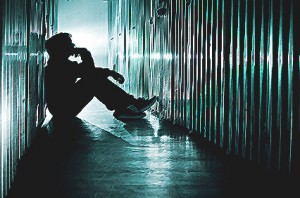How Did We Get Here and Where Are We Going? Exploring the Intersection of Mental Health and Criminal Justice: A Look At The Past and a Plan For Our Future

Introduction
It is a tremendous honor to be extended the opportunity to talk with the readers of Psychalive about the intersection of mental health and criminal justice. My career has allowed me entry into correctional, policy, and not for profit settings. This has provided the chance to learn from field experts about the realities of incarceration and prisoner reentry. My specializations on prison culture, persons with mental health issues in the justice system, and prisoner reentry have been cultivated over the past decade. This blog will be dedicated to all matters concerning the intersection of health and justice. You are welcome to ask questions and suggest topic ideas in order to provide you with the information and tools you need to be proactive and productive in our shared interests and work. I look forward to communicating with you.
This is a pivotal time in our country’s history as there is a swell of persons with mental health needs in the justice system. Human Rights Watch showed approximately seventy thousand incarcerated persons are psychotic on any given day (2003). For 2005, the most recent year with data available, the Bureau of Justice Statistics showed “56% of State prisoners, 45% of Federal prisoners, and 64% of jail inmates had mental health problems… Mental health problems were defined by [either]: a recent history or symptoms of a mental health problem” (U.S. Department of Justice, 2006). This critical mass of incarcerated persons with mental health needs puts us all in the center of a turning point in health and justice policy.
Before we look to the future, we must first look to the past. How did we get to this place of incarcerating persons with mental health needs? How did Rikers Island Jail in New York City, Cook County Jail in Chicago, and the Twin Towers Jail in Los Angeles become the three largest inpatient psychiatric facilities in the United States? How did we get to this place? And how can we get out of this place?
The story of mental illness in prison is one of trans-institutionalization; the shift from one institution to another. In the late 1840’s and early 1850’s the United States witnessed an influx of immigrants. With their dreams of golden paved roads in the New World came their need for shelter and healthcare. At this time, it was standard practice to treat persons with mental health needs in serene pastoral settings. With this population increase and their lack of resources, this type of care became unmanageable. Further, the social disparities among patients led to wealthier persons seeking care privately and lower income immigrants seeking care closer to their urban homes and families. By the late 1870’s we see an increase of ‘asylums’ with a call from state legislators to maintain low costs. In 1890 the New York State Care Act introduced ‘mental hygiene’ and the psychiatric hospital setting. However, as a result of an ever-increasing population of persons with mental illness coupled with the state taking on full fiscal responsibility for the care of this group, this system became overwhelmed and ill equipped. Post World War II, the field of psychology began to favor community-based short-term care to foster family unification and brief treatment. With the 1950’s came psychotropic medication aimed toward treatment and recovery. The early 1960’s began the process of de-institutionalization through the federal Community Mental Health Centers Act (CMHC) in 1963. The mission of this Act was to shift care from the asylum to the community. But, with an impending war in Vietnam, funds shifted from healthcare to warfare. The work of the Act began, but was never completed. Mental hospitals were closed; the community centers were never funded or opened. This left thousands of patients in the street- ill, alone, and without care.
Without the care and shelter of the hospital system, former patients were rendered homeless. This now transient population became entangled in the justice system. The great majority of these individuals are sentenced for non-violent offenses. The shift from hospital to correctional facility was swift and certain. What we have now is a new prison population- one not intended for regimented society and strict confinement. Being unable to live under prison rule, persons with mental illness serve longer and harsher sentences than their healthy counterparts and become vulnerable to physical and sexual assault (Sultan, 2006). The reality of people behind bars with mental illness will be discussed in further writings.
It is important to remember when we talk about incarcerated people or people with mental illness that we discuss just that: people. These are not ‘the mentally ill’ or ‘inmates’ or ‘prisoners’. Terms such as these are used to de-personify the individual, but we will not do that. These are people and they will be discussed here as such The terms noted above may occur in our discussions when utilizing institutional language, these terms will always be seen in quotations. It is important that we recognize that language carries with it power. We will work to empower persons with mental illness as well as incarcerated individuals.
Investing in the proper care and treatment of persons with mental health needs in the justice system is an important piece of public safety. As over 90% of incarcerated people eventually come home, we must pay attention to their current living situation and help them plan for their futures. Future writings will discuss prison culture, prisoner reentry, and the impact these issues have not only on those incarcerated, but those working in correctional facilities and the outside general population. Future writings will also be dedicated to innovations such as mental health courts and alternatives to incarceration programs.
Prison culture is not as far away as some think. Many walk through prison gates each day to work, many are released to our communities, and many go back behind prison walls again. The links between prison culture and our general society will also be discussed in future writing. We must not lose sight of people once they are incarcerated. We must understand the cycle of incarceration, the intersection of race/class/gender in the justice system, and how health impacts all of these issues.

Bonnie Sultan is a noted expert in the field of criminal justice and mental health with two Masters Degrees: Sociology with a Criminology concentration and Forensic Mental Health Counseling. Ms. Sultan specializes in institutional culture, prisoner reentry, and the intersection of mental health and justice. As a federal grant reviewer, she is an expert in analyzing collaborative criminal justice programs. Ms. Sultan has had the opportunity to work in correctional, county, city, federal, and not-for-profit settings. She brings an understanding of prison and jail culture to our shared work and how these cultures impact persons living, working, and returning from these environments. Read more about Bonnie Sultan.
2 Comments
Leave a Reply
You must be logged in to post a comment.










What a wonderful explanation. Understanding leads to solution!
Great points made here. Looking forward to reading more…